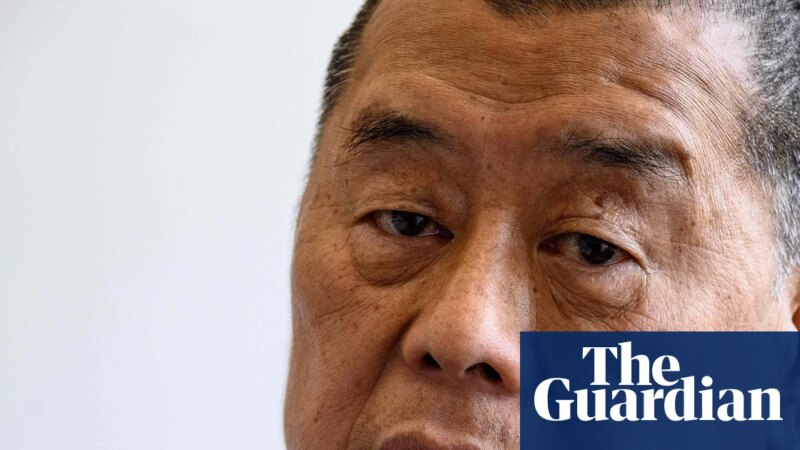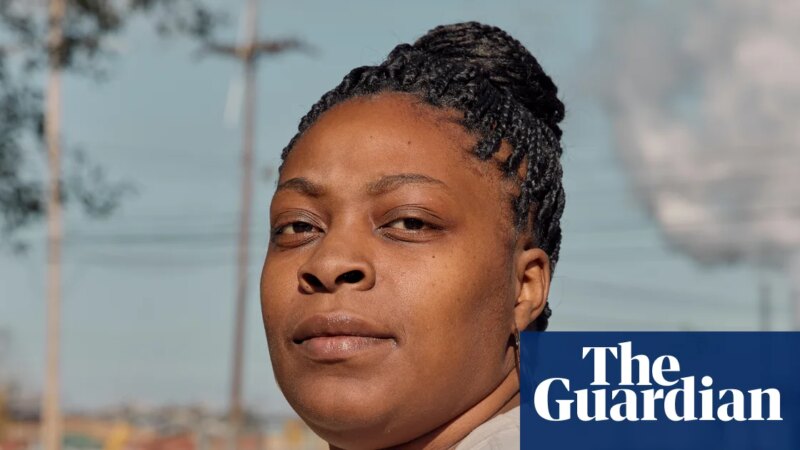Less politics, more makeup: the unraveling of Teen Vogue under Trump 2.0 | Vogue
In late 2016, just a few weeks after Donald Trump won his first presidential election, Teen Vogue published a story that set the internet ablaze: “Donald Trump Is Gaslighting America.”
The story garnered more than 1.3m hits, making it the magazine’s most-read story of the year. Elaine Welteroth, then the editor-in-chief, told NPR that the day it published, Teen Vogue sold “in that month, more copies of the magazine than we had that entire year”. It was a transformative moment for the publication: proof that a magazine long associated with Disney child stars and headlines like “Prom Fever!” could shine light on the political dimensions of young people’s lives.
Over the following years, Teen Vogue deepened its coverage of politics and identity, becoming an unlikely hearth for progressive, even radical, feminism within the manicured offices of its publisher Condé Nast.
Now, nearly a decade since that “Gaslighting America” story, Trump is once again in the White House and Teen Vogue as it was once known is gone.
Earlier this month, a Vogue Business article announced that Condé Nast was folding Teen Vogue into its flagship property, Vogue, to “provide a more unified reader experience across titles”. Although the article promised that Teen Vogue would “keep its unique editorial identity and mission”, it also said the outlet would now focus on “career development” and “cultural leadership” while its editor-in-chief would be stepping down. Condé Nast also laid off six unionized Teen Vogue employees, including its politics editor. Most of the laid-off employees were “BIPOC women or trans”, according to the Condé Nast union.
After Condé staffers questioned the head of HR over the layoffs, the company fired four of them, prompting pushback from the union and a pledge from New York’s attorney general, Letitia James: “Condé Nast, I’ll see you in court.”
A Condé Nast spokesperson told the Guardian that changes to Teen Vogue were driven solely by business concerns, not by politics, and added: “The employment terminations were lawful and based on clear violations of company policies.”
Teen Vogue’s unraveling comes at a time of intensifying turbulence for journalism, particularly of the progressive variety. Many of the blogs that once studded the feminist media universe and made “gaslighting” a mainstream term – Jezebel, Feministing, the Hairpin, the Toast – now lay dead or dying. Several of their staid older sisters, the women’s magazines, have started publishing fewer print issues a year or going digital-only. Youth-oriented websites once believed to be the future of media, like Vice and Vox, have shed jobs at astonishing rates. (Note: I worked at Vice for years before quitting in 2023, after the company laid off wide swathes of the newsroom and filed for bankruptcy.)
These outlets frequently focused on the people whose lives have fallen under the glare of the Trump administration’s microscope: women, people of color, LGBTQ+ folks, anybody to the left of Ben Shapiro. Taken together, their downfall can feel like an industry-wide retreat from covering long-marginalized voices.
“People change their policies based on reading the vibe in the room, if you will,” said Christina Bellantoni, director of Annenberg’s Media Center at the University of Southern California. (Bellantoni is friends with Teen Vogue’s outgoing editor-in-chief.) “We’ve got three more years of this administration making clear its priorities do not lay with having newsrooms that are reflective of the diverse world we cover.”
The dismal economics of trying to make money off the internet have decimated outlets of all political stripes. Between 2008 and 2024, 74% of newsroom jobs vanished. Condé is a part of that trend, having endured multiple rounds of layoffs over the last several years.
But it’s a unique set of pressures that have been responsible for crushing feminist publications. During the reign of the 2010s #girlboss, the feminist blogosphere generated takes on everything from Christmas songs to Edward Snowden’s girlfriend. Women’s magazines took note and started publishing uncomplicated odes to “the notorious RBG” and the Wing, a now-shuttered women-focused club and co-working space.
That type of coverage evaporated after the 2016 election, which saw most white women vote for Trump instead of voting for Hillary Clinton to shatter “the highest and hardest glass ceiling.” During that same time, social media algorithms became increasingly opaque, sending feminist media’s online traffic plummeting at the same moment that Trump’s policies started to threaten long-held feminist victories.
Now, under Trump 2.0, all journalism is more fraught, particularly for women. Earlier this month, Trump told a female journalist: “Quiet, piggy.”
“These glossy magazines are generally wary of political coverage, because they say advertisers don’t want to sponsor it,” said Amy Odell, an independent journalist who runs the fashion news Substack Back Row and closely covers Vogue.
“This cuts deep with women’s publications because they probably get that feedback more than men’s publications do. With women’s publications, it’s like: ‘Just do lip liner tutorials and we’ll sell those to beauty advertisers’.”
Condé outlets like Wired, the New Yorker and Vanity Fair have continued to cover politics; Glamour, a Condé women’s magazine, also sometimes covers it. But some ex-employees have said that they felt company brass undermined Teen Vogue’s political coverage. Alma Avalle, a Bon Appetit journalist fired after the confrontation with Condé leadership, told the New York City local news outlet Hell Gate that she had heard that “an executive said something to the effect of: ‘The company is trying to avoid the attention of the Trump administration, and trying to avoid the attention and the scrutiny of the right.’”
Allegra Kirkland, Teen Vogue’s former politics director, wrote in Talking Points Memo that ahead of Trump’s second inauguration, she was told that Anna Wintour – Condé’s global chief content officer and artistic director – didn’t want to hear the word “politics” during Teen Vogue’s annual strategy meeting.
In response to questions for this story, a Condé spokesperson said in an email: “Teen Vogue has faced ongoing challenges around scale and audience reach for some time. Rather than continuing to operate independently, bringing Teen Vogue under the Vogue umbrella allows it to tap into a larger audience, stronger distribution and more resources.”
They added: “This was a business decision, not a political one.”
Some staff from folded feminist publications have gone independent, writing for platforms like Substack. But many of the most popular outlets covering the intersection of politics, identity and women are now on the right.
As feminist and progressive outlets have receded, a conservative “womanosphere” has blossomed, peopled by podcasts like Culture Apothecary, a Turning Point USA production hosted by Maga influencer Alex Clark, and the wannabe “conservative Cosmo” magazine Evie, which recently put tradwife royalty Hannah Neeleman on the cover. The denizens of the womanosphere tend to thread their talk of style, wellness and beauty with antifeminist rhetoric and support for traditional gender roles.
One recent Evie email blast, entitled “5 Ways Single Girls Are Repelling Good-Hearted Masculine Men”, advised: “An empowered woman who is overflowing with joy about her career, and knows that it won’t ever be as important as being a wife and mother, does not need to turn a date into a staff meeting where she is respected for her ideas.”
Shara Crookston, an associate professor of women’s and gender studies at the University of Toledo who has studied Teen Vogue, said that the rise of the womanosphere is easily explained: “I read that as a backlash to feminist progress.”
Crookston fears that it is young people, Teen Vogue’s core audience, who seem set to pay the highest price for these changes in media. Not only are they the inheritors of whatever the Trump administration leaves behind, but they are increasingly and uniquely restricted by the harshest of rightwing policies, such as bans on gender-affirming care, access to internet porn and interstate travel for abortions.
“I worry that young girls are going to have less options for media content that helps them explore different aspects of their life, and I think that could be pretty damaging,” she continued. “What if you are a teenage girl who knows that you don’t want to get married and have kids and all that you’re seeing is: ‘This is why this is important to be straight, to get married, to have kids’? What options are going to be available to her?”
Over the last three years, I interviewed more than 100 Americans under 30 about their sexual and romantic lives, their political leanings and the forces that shaped both. While influencers may make up the bulk of young people’s media diet, my interviewees often relied on – and longed for – information from factchecked publications.
Paxton Smith, a 20-year-old Texan, was once riveted by a Snapchat story from Cosmopolitan that had emphasized that women have the right to choose how to style their body hair. Smith had never realized she had a choice; she just wanted to do what she thought boys wanted.
“That was a crazy thing for me to see,” she recalled. “No one had ever framed a woman’s body – especially in a sexual way – as being [able to be] whatever floated their boat. It didn’t have anything to do with what anybody else thought.”
From that Cosmo story, Smith said she learned that “what’s sexy is what’s sexy to you and you should prioritize you”. It was part of her political awakening. Years later, Smith went viral for giving a speech at her Dallas area high school about the importance of abortion rights.
Lex McMenamin, a Teen Vogue staffer who was laid off when the outlet was folded into Vogue, said they thought about the future of young people “every day, on weekends, at night, for years”.
“Feminist media is not dead,” McMenamin said. “Young people are so smart. I lack the nihilism that people have about young people and learning and self-development, including for marginalized people. There’s more trans people and more queer people every day, even though they’re doing their damnedest to make us want to die. It doesn’t matter. Our readers will always exist.”





